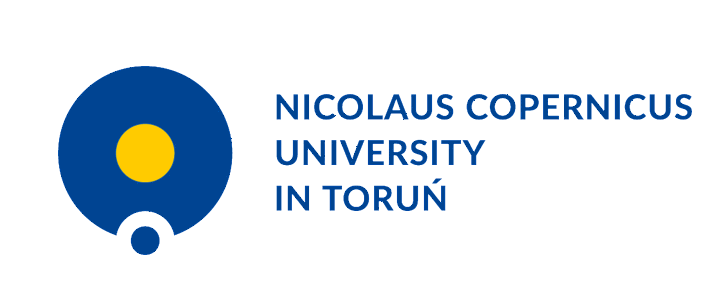<? $flaga_wiadomosci="english"; $jezyk="en"; $tag=1;//główne include '../baza/baza_www_aktualnosci_config.inc.php'; function zamien($str) { return str_replace(" "," ",$str); } function zamien2($str) { //$str=str_replace(" "," ",$str); $str=str_replace("»","*",$str); $str=str_replace("«","*",$str); $str=str_replace("\"",""",$str); return $str; } function is_pionowe($zdjecie){ $dim = getimagesize($zdjecie); $width = $dim[0]; $height = $dim[1]; if($height> $width || $width<300) return true; else return false; } if(isset($_GET['tag']) && !empty($_GET['tag'])){ if(is_numeric($_GET['tag'])) { $tag = $_GET['tag']; $q = 'SELECT * FROM '.$GLOBALS['db_tagi'].' WHERE id="'.mysql_real_escape_string($_GET['tag']).'"'; $r = mysql_query($q); if($r){ while($row = mysql_fetch_assoc($r)){ $tag_name = $row['nazwa']; } }else echo "Database error"; }else{ $q = 'SELECT * FROM '.$GLOBALS['db_tagi'].' WHERE kod="'.mysql_real_escape_string($_GET['tag']).'"'; $r = mysql_query($q); if($r){ while($row = mysql_fetch_assoc($r)){ $tag = $row['id']; $tag_name = $row['nazwa']; } }else echo "Database error"; } } $prefix = 'wiadomosci_umk'; if(strlen($_GET['id'])>0 && $_GET['id']>0) { if(is_numeric($_GET['id'])){ if(strlen($_GET['id'])==14){ //sprawdzam czy, ktoś nie podał starego id $question='SELECT * FROM mappings_umk WHERE old_id='.mysql_real_escape_string($_GET['id']).' AND tabela="wiadomosci_umk_informacje" LIMIT 1;'; $res = mysql_query($question); if(!$res){ //file_put_contents("tmp.txt",$query." ".mysql_error()); }else{ //file_put_contents("tmp.txt","ok"); } if($row = mysql_fetch_array($res)){ $get_id = $row['new_id']; } }else{ $get_id = $_GET['id']; } $question='SELECT * FROM '.$GLOBALS['db_aktualnosci'].' WHERE id='.mysql_real_escape_string($get_id).' AND publikuj="1" LIMIT 1;'; $result=mysql_query($question); if($row=mysql_fetch_assoc($result)) { $zdjecie=""; if(strlen($row['srednie'])>0) $zdjecie="./zdjecia/".$row['id']."/srednie.".$row['srednie']; elseif(strlen($row['duze'])>0) $zdjecie="./zdjecia/".$row['id']."/duze.".$row['duze']; elseif(strlen($row['zmieniacz'])>0) $zdjecie="./zdjecia/".$row['id']."/zmieniacz.".$row['zmieniacz']; //elseif(strlen($row['wgladowka_0'])>0) $zdjecie="./zdjecia/".$row['id']."_wgl_0.".$row['wgladowka_0']; ?> <? if(strlen($zdjecie)>0) { ?>
<? } ?>
<? } ?>") { ?>
<? } ?> ") { ?><? } ?>") { ?>
<? } ?><? //---galeria /* $id_galerii=$id; if(strlen($row['galeria_z'])>0) { $id_galerii=$row['galeria_z']; } */ $src_path = './galerie'; $gal_path = './galerie'; $id_galerii = $row['id_galerii']; if (is_dir("$gal_path/$id_galerii/") ) { ?>
Photo gallery
Search News Archive
<? if($_GET['akcja']=="szukaj") { if(strlen($_GET['dzien_od'])>0 && $_GET['dzien_od']!=0 && strlen($_GET['mies_od'])>0 && $_GET['mies_od']!=0 && strlen($_GET['rok_od'])>0 and $_GET['rok_od']!=0) $data_od=$_GET['rok_od']."-".$_GET['mies_od']."-".$_GET['dzien_od']; if(strlen($_GET['dzien_do'])>0 && $_GET['dzien_do']!=0 && strlen($_GET['mies_do'])>0 && $_GET['mies_do']!=0 && strlen($_GET['rok_do'])>0 and $_GET['rok_do']!=0) $data_do=$_GET['rok_do']."-".$_GET['mies_do']."-".$_GET['dzien_do']; $query="SELECT * FROM ".$GLOBALS['db_aktualnosci']." WHERE dzial=\"Archiwum\""; if(strlen($szukaj)>0) $query.=" AND ((tytul LIKE \"%".mysql_real_escape_string($szukaj)."%\") OR (naglowek LIKE \"%".mysql_real_escape_string($szukaj)."%\") OR (tresc LIKE \"%".mysql_real_escape_string($szukaj)."%\") OR (podpis LIKE \"%".mysql_real_escape_string($szukaj)."%\") OR (autor LIKE \"%".mysql_real_escape_string($szukaj)."%\"))"; if(strlen($data_od)>0) $query.=" AND (data >= \"".mysql_real_escape_string($data_od)."\")"; if(strlen($data_do)>0) $query.=" AND (data <= \"".mysql_real_escape_string($data_do)."\")"; $query.=" AND (jezyk = '".mysql_real_escape_string($jezyk)."')"; $query.=" AND bez_artykulu<>\"1\" AND publikuj=\"1\" ORDER BY data DESC, id DESC"; //echo $query; $result=mysql_query($query); if($result) { echo "\n"; if (mysql_num_rows($result)==0) { echo "
Not found. Try to change the phrase.
\n"; } else { echo "
Found: ".mysql_num_rows($result)."
\n"; } } else { echo "
Database connection problem.
\n"; } } } else { $question='SELECT a.* FROM '.$GLOBALS['db_aktualnosci'].' AS a LEFT OUTER JOIN '.$GLOBALS['db_tagi_informacje'].' AS ti ON ti.id_informacji=a.id WHERE Dzial="Aktualnosci" AND bez_artykulu<>"1" AND publikuj="1" AND jezyk="'.mysql_real_escape_string($jezyk).'" AND id_tagu='.mysql_real_escape_string($tag).' AND ti.lista="1" ORDER BY kolejnosc ASC, data DESC, a.id DESC;'; $result=mysql_query($question); } if($result) while($row=mysql_fetch_assoc($result)) { $zdjecie=""; if(strlen($row['male'])>0) $zdjecie="./zdjecia/".$row['id']."/male.".$row['male']; elseif(strlen($row['srednie'])>0) $zdjecie="./zdjecia/".$row['id']."/srednie.".$row['srednie']; elseif(strlen($row['duze'])>0) $zdjecie="./zdjecia/".$row['id']."/duze.".$row['duze']; elseif(strlen($row['zmieniacz'])>0) $zdjecie="./zdjecia/".$row['id']."/zmieniacz.".$row['zmieniacz']; ?>
<? } ?> <? if($_GET['dzial']!="Archiwum" && $_GET['dzial']!="archiwum") { ?>
<? } ?> <? } ?>
